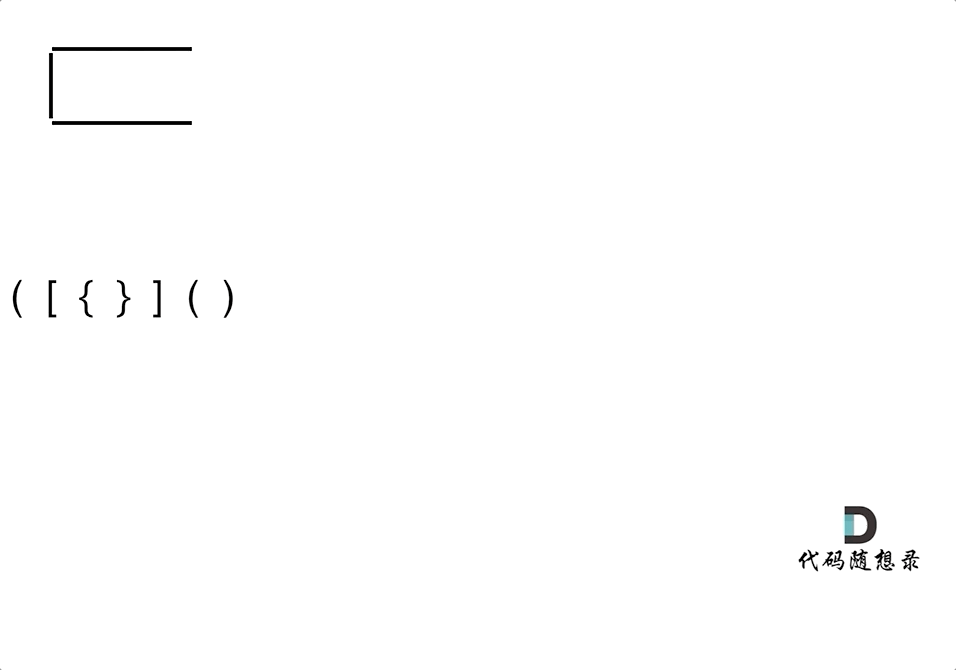代码随想录Day10
232.用栈实现队列
请你仅使用两个栈实现先入先出队列。队列应当支持一般队列支持的所有操作(push、pop、peek、empty):
实现 MyQueue 类:
void push(int x) 将元素 x 推到队列的末尾
int pop() 从队列的开头移除并返回元素
int peek() 返回队列开头的元素
boolean empty() 如果队列为空,返回 true ;否则,返回 false
说明:
你 只能 使用标准的栈操作 —— 也就是只有 push to top, peek/pop from top, size, 和 is empty 操作是合法的。
你所使用的语言也许不支持栈。你可以使用 list 或者 deque(双端队列)来模拟一个栈,只要是标准的栈操作即可。
示例 1:
输入: ["MyQueue", "push", "push", "peek", "pop", "empty"] [[], [1], [2], [], [], []] 输出: [null, null, null, 1, 1, false] 解释: MyQueue myQueue = new MyQueue(); myQueue.push(1); // queue is: [1] myQueue.push(2); // queue is: [1, 2] (leftmost is front of the queue) myQueue.peek(); // return 1 myQueue.pop(); // return 1, queue is [2] myQueue.empty(); // return false
提示:
1 <= x <= 9
最多调用 100 次 push、pop、peek 和 empty
假设所有操作都是有效的 (例如,一个空的队列不会调用 pop 或者 peek 操作)
进阶:
你能否实现每个操作均摊时间复杂度为
正解(模拟)
这是一道模拟题,不涉及到具体算法,考察的就是对栈和队列的掌握程度。
使用栈来模式队列的行为,如果仅仅用一个栈,是一定不行的,所以需要两个栈一个输入栈,一个输出栈,这里要注意输入栈和输出栈的关系。
在push数据的时候,只要数据放进输入栈就好,但在pop的时候,操作就复杂一些,输出栈如果为空,就把进栈数据全部导入进来(注意是全部导入);
再从出栈弹出数据,如果输出栈不为空,则直接从出栈弹出数据就可以了。
最后如何判断队列为空呢?如果进栈和出栈都为空的话,说明模拟的队列为空了。
在代码实现的时候,会发现pop() 和 peek()两个函数功能类似,代码实现上也是类似的,可以思考一下如何把代码抽象一下。

上代码(●'◡'●)
class MyQueue { public: stack<int> stIn; stack<int> stOut; /** Initialize your data structure here. */ MyQueue() { } /** Push element x to the back of queue. */ void push(int x) { stIn.push(x); } /** Removes the element from in front of queue and returns that element. */ int pop() { // 只有当stOut为空的时候,再从stIn里导入数据(导入stIn全部数据) if (stOut.empty()) { // 从stIn导入数据直到stIn为空 while(!stIn.empty()) { stOut.push(stIn.top()); stIn.pop(); } } int result = stOut.top(); stOut.pop(); return result; } /** Get the front element. */ int peek() { int res = this->pop(); // 直接使用已有的pop函数 stOut.push(res); // 因为pop函数弹出了元素res,所以再添加回去 return res; } /** Returns whether the queue is empty. */ bool empty() { return stIn.empty() && stOut.empty(); } };
225. 用队列实现栈
请你仅使用两个队列实现一个后入先出(LIFO)的栈,并支持普通栈的全部四种操作(push、top、pop 和 empty)。
实现 MyStack 类:
void push(int x) 将元素 x 压入栈顶。
int pop() 移除并返回栈顶元素。
int top() 返回栈顶元素。
boolean empty() 如果栈是空的,返回 true ;否则,返回 false 。
注意:
你只能使用队列的标准操作 —— 也就是 push to back、peek/pop from front、size 和 is empty 这些操作。
你所使用的语言也许不支持队列。 你可以使用 list (列表)或者 deque(双端队列)来模拟一个队列 , 只要是标准的队列操作即可。
示例:
输入:
["MyStack", "push", "push", "top", "pop", "empty"] [[], [1], [2], [], [], []] 输出: [null, null, null, 2, 2, false] 解释: MyStack myStack = new MyStack(); myStack.push(1); myStack.push(2); myStack.top(); // 返回 2 myStack.pop(); // 返回 2 myStack.empty(); // 返回 False
提示:
1 <= x <= 9
最多调用100 次 push、pop、top 和 empty
每次调用 pop 和 top 都保证栈不为空
进阶:你能否仅用一个队列来实现栈。
正解(模拟)
其实这道题目就是用一个队列就够了。
一个队列在模拟栈弹出元素的时候只要将队列头部的元素(除了最后一个元素外) 重新添加到队列尾部,此时再去弹出元素就是栈的顺序了。
上代码(●'◡'●)
class MyStack { public: queue<int> que; /** Initialize your data structure here. */ MyStack() { } /** Push element x onto stack. */ void push(int x) { que.push(x); } /** Removes the element on top of the stack and returns that element. */ int pop() { int size = que.size(); size--; while (size--) { // 将队列头部的元素(除了最后一个元素外) 重新添加到队列尾部 que.push(que.front()); que.pop(); } int result = que.front(); // 此时弹出的元素顺序就是栈的顺序了 que.pop(); return result; } /** Get the top element. ** Can not use back() direactly. */ int top(){ int size = que.size(); size--; while (size--){ // 将队列头部的元素(除了最后一个元素外) 重新添加到队列尾部 que.push(que.front()); que.pop(); } int result = que.front(); // 此时获得的元素就是栈顶的元素了 que.push(que.front()); // 将获取完的元素也重新添加到队列尾部,保证数据结构没有变化 que.pop(); return result; } /** Returns whether the stack is empty. */ bool empty() { return que.empty(); } };
20. 有效的括号
给定一个只包括 '(',')','{','}','[',']' 的字符串 s ,判断字符串是否有效。
有效字符串需满足:
左括号必须用相同类型的右括号闭合。
左括号必须以正确的顺序闭合。
每个右括号都有一个对应的相同类型的左括号。
示例 1:
输入:s = "()" 输出:true
示例 2:
输入:s = "()[]{}" 输出:true
示例 3:
输入:s = "(]" 输出:false
提示:
1 <= s.length <= 104
s 仅由括号 '()[]{}' 组成
正解(栈)
栈非常经典的一道题了

思路也不难
由于栈结构的特殊性,所以很适合来解决对称匹配类的题目
上代码(●'◡'●)
class Solution { public: bool isValid(string s) { if (s.size() % 2 != 0) return false; // 如果s的长度为奇数,一定不符合要求 stack<char> st; for (int i = 0; i < s.size(); i++) { if (s[i] == '(') st.push(')'); else if (s[i] == '{') st.push('}'); else if (s[i] == '[') st.push(']'); // 第三种情况:遍历字符串匹配的过程中,栈已经为空了,没有匹配的字符了,说明右括号没有找到对应的左括号 return false // 第二种情况:遍历字符串匹配的过程中,发现栈里没有我们要匹配的字符。所以return false else if (st.empty() || st.top() != s[i]) return false; else st.pop(); // st.top() 与 s[i]相等,栈弹出元素 } // 第一种情况:此时我们已经遍历完了字符串,但是栈不为空,说明有相应的左括号没有右括号来匹配,所以return false,否则就return true return st.empty(); } };
写博不易,请大佬点赞支持一下8~






【推荐】国内首个AI IDE,深度理解中文开发场景,立即下载体验Trae
【推荐】编程新体验,更懂你的AI,立即体验豆包MarsCode编程助手
【推荐】抖音旗下AI助手豆包,你的智能百科全书,全免费不限次数
【推荐】轻量又高性能的 SSH 工具 IShell:AI 加持,快人一步
· 阿里最新开源QwQ-32B,效果媲美deepseek-r1满血版,部署成本又又又降低了!
· Manus重磅发布:全球首款通用AI代理技术深度解析与实战指南
· 开源Multi-agent AI智能体框架aevatar.ai,欢迎大家贡献代码
· 被坑几百块钱后,我竟然真的恢复了删除的微信聊天记录!
· AI技术革命,工作效率10个最佳AI工具